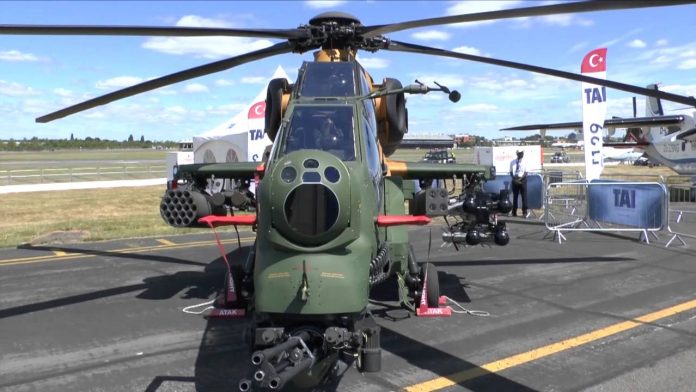By USMAN A KHAN/ABDULLAH NIAZI
LAHORE/ANKARA: Turkish producers of tactical military goods, Askeri Elektronik Sanayi, Military Electronic Industries (ASELSAN), and Turkish Aerospace Industries (TAI) have set their sight on expanding their activities in Pakistan after labelling it “a very important market.”
The Turkish defence equipment manufacturers have been hot in demand among the South Asian and Middle Eastern diaspora with a number of countries expressing their interest in gaining contracts with them and other Turkish corporations.
Pakistan, too, had been among these countries with Prime Minister Shahid Khaqan Abbasi, during his recent visit to Ankara, personally participating in a test flight of a T-129 attack helicopter manufactured by TAI. According to reports, Pakistan is thinking of spending almost $ 1.5 billion to replace its worn-out Bell AH-1F and AH-1S Cobra attack helicopters with 30 T-129s from Turkey.
On the other hand, Turkish manufacturers are also interested in Pakistan. While Turkey’s search for markets in South Asia is not confined to Pakistan and includes Thailand, Malaysia, Indonesia, the Philippines and Vietnam, it has been Pakistan that they have generally favoured.
Speaking to Pakistan Today, Turkish Defense industry expert Arda Mevlutoglu explained this by saying that Pakistan and Turkey “are strong regional powers with very strong relations. By conducting joint research and development programmes, the two countries can share risks and costs, which is essential to undertake high profile projects. Another benefit would be leverage for export to third countries.”
Pakistan must respond with vigour, however, as Turkey is in a hurry to find markets, and Pakistan would be better off cashing in on their comparative advantage to other countries.
“Turkey needs to increase the export sales of her defence industry in order to achieve sustainability and growth. The Middle East and South Asia are primary markets because of deep cultural, historical and political connections. It is relatively easy for Turkey to develop business with the countries in these regions” explained Mevlutoglu.
He also added that the companies in question, especially ASELSAN and TAI, are both top-of-the-line manufacturers that Pakistan will want to do business with in order to best equip their military.
Speaking about what the Pakistan Aeronautical Complex (PAC) had to gain from TAI, Mevlutoglu was all praise, saying “TAI is one of the top 100 defence contractors in the world. It has advanced manufacturing technology and experience from major projects like F-16, F-35, A400M. The accumulated experience can be of use for PAC to develop its competitive power and capabilities. By using this cooperation, PAC can rapidly become a key player in the aerospace sector in South Asia.”
Meanwhile, companies, including ASELSAN, have expressed their interest in the Pakistani market as far back as last year. Their Regional Business Development Manager for the Middle East and Africa Oğuz Yemişçiler had made the corporation’s intent known when he confirmed that the company sold ASELPOD advanced targeting pods to the PAF for use on the latter’s JF-17 Thunder lightweight multi-role fighter in November 2016.
ASELSAN also has multiple other contracts with Pakistan and was awarded a $ 25 million deal by the PAF to supply 16 ASELPODs. It is also working on the al-Khalid main battle tank (MBT) programme and has been doing so for over 10 years and is also among several subsystems vendors supporting the Pakistan Navy’s Agosta 90B submarine upgrade programme.
Bilal Khan, a defence and security analyst and chief analyst of the Quwa Defence Analysis Group, told Pakistan Today that after these new contracts, “it’s a matter of long-term opportunity and seeing how other big-ticket defence items go, e.g. talks are ongoing for 30 T129 ATAK attack helicopters from TAI.”
Likewise, he added, “If the Pakistan Navy selects the MILGEM Ada corvette as part of its fleet modernisation plans, Aselsan will have the opportunity to supply a wide range of equipment, e.g. radars, ESM, other sensors and so on.”




